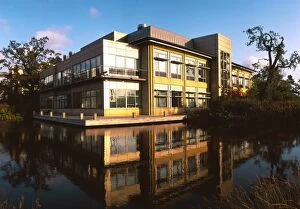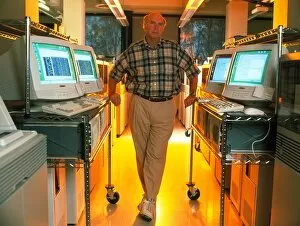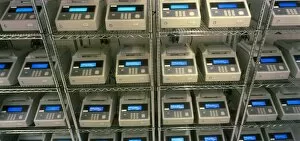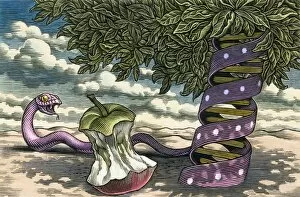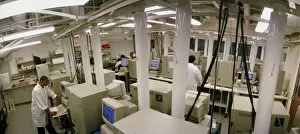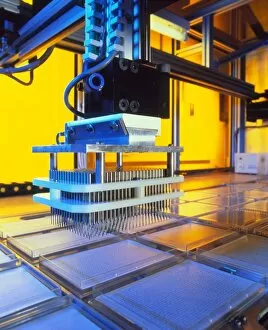Human Genome Project Collection
The Human Genome Project, a groundbreaking scientific endeavor, utilized the Sanger Centre as its primary hub for research. Spearheaded by renowned geneticist Dr
For sale as Licensed Images
Choose your image, Select your licence and Download the media
The Human Genome Project, a groundbreaking scientific endeavor, utilized the Sanger Centre as its primary hub for research. Spearheaded by renowned geneticist Dr. Craig Venter, this project aimed to decode the entire human genome and unravel the mysteries hidden within our DNA. Genetics had become the new religion of sorts, captivating scientists and society alike with its potential to unlock profound insights into our existence. Within laboratories dedicated to this ambitious mission, rows of PCR systems tirelessly copied fragments of human DNA, paving the way for further analysis. As researchers meticulously sequenced these strands in their quest for knowledge, automated DNA sequencers became invaluable tools in deciphering the complex code that makes us who we are. Amidst this awe-inspiring pursuit lay both excitement and fear. The discoveries made during the Human Genome Project held immense promise but also raised concerns about ethical implications and privacy issues associated with genetic research. In these laboratories teeming with cutting-edge technology, technicians diligently operated rows of DNA thermocyclers while robot arms deftly handled trays filled with bacteria containing precious strands of DNA. These automated processes streamlined genome mapping efforts and accelerated progress towards unlocking humanity's most intimate secrets encoded within our genes. As each milestone was reached along this arduous journey through countless genomes, humankind edged closer to understanding diseases at their core and developing personalized treatments tailored specifically to individuals' unique genetic makeup. While some feared that tinkering with nature's blueprint could have unintended consequences or lead down a slippery slope towards eugenics-like practices; others saw hope in harnessing genetics as a means to eradicate hereditary illnesses once thought incurable. Ultimately, the Human Genome Project revolutionized our understanding of ourselves on an unprecedented scale. It laid bare not only our shared ancestry but also highlighted subtle variations that make each individual truly one-of-a-kind. This monumental undertaking forever changed how we approach medicine and paved the way for future breakthroughs in genomics.

